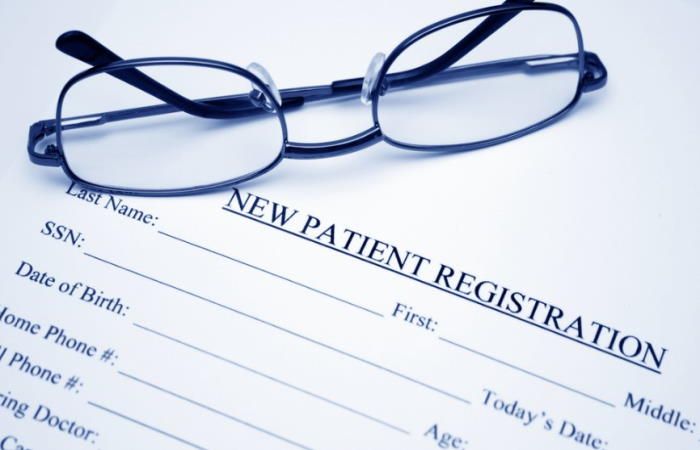According to the HIPAA Journal, there were more than 2,000 data breaches in healthcare between 2009 and 2017. This data is alarming given that the statistic spans less than a decade. It is also an eye-opener for healthcare organizations to devise safeguards and policies that ensure compliance and protect confidential healthcare data. It's time to take a proactive approach and use these 11 strategies to prevent data breaches in healthcare.
Why is the healthcare industry a huge target?

Healthcare data, specifically patient data, is a goldmine of information that cybercriminals and attackers can use for their own gain. For example, hospital and patient records contain vital information such as a person's name, date of birth, address, social security number, payment information (like credit card), etc.
The ability to access this information can be worth plenty of money to the cybercriminals who can access them. They can sell the information to the black market or use it for identify theft. It can also be used to extort money from healthcare organizations. Since hospitals and healthcare facilities collect information for every patient who are treated under their care, they become an easy target.
How to prevent data breaches in healthcare
Understanding the risk of data breaches in the healthcare industry is the first step to combating cybercrimes. Knowing that a threat exists and where they could potentially attack will enable healthcare organizations to map out the steps of how to prevent data breaches in healthcare.
While challenging - and might require extra funding - improving security to combat data breaches is a wise investment.
1. Assess current healthcare security measures.
Before you can refine your healthcare security measures and policies, it is important to know where they currently stand. Conduct an internal audit to determine the areas that are most vulnerable and to find ways to fix them. Vulnerability detection should be given top priority so you can identify how to mitigate those risks.
2. Ensure compliance of information security systems.
An internal audit is a must to ensure that you have implemented the best practices to help prevent data breaches. However, it is also important that you measure your information security systems against industry verticals. This approach is beneficial, not just in terms of regulatory compliance, but also to build confidence to deploy the best information security system that you can offer.
3. Work with trusted partners.
Healthcare organizations must work with external providers such as insurance companies, medical billing providers, and other third-party service providers. If you choose to involve a third party in the handling of patient data, make sure that these partners are not only trusted, but they also have the same level of security as your organization. Look into the quality of their information security as a factor when choosing who to work with.
4. Write an incident response plan.
Your goal is to know how to prevent data breaches in healthcare. However, it is also part of your risk mitigation plan to come up with an incident response - should the breach happen. The purpose of an incident response plan is to prevent the attack from escalating. You must have clear guidelines on the decisions that need to be made and the measures that follow.
5. Consider the quality of the end-user system.
While you do your best to heighten the security level of your organization's systems, think about the end-user. You must ensure that the end points are protected as attacks can come from any weak points in your system.

6. Limit access to healthcare data.
You should only designate control and access to confidential data to the appointed positions. Implement a hierarchy in the access to healthcare data by limiting and managing user permissions. This approach is one of the best ways to prevent a data breach.
7. Continually educate your staff about healthcare security.
Your staff plays a vital role in preserving the security and privacy of patient health data. It is crucial that you continually educate them about current and new regulations from HIPAA and other government regulations that apply. This step is a must since your employees serve to uphold your security policies and they should be made aware of the potential consequences of failure to abide by these policies.
For example, your employees must observe the best practices when sharing and divulging patient information. Each employee must be held accountable.
8. Develop subnetworks for your security system.
When a data breach happens, it attacks the entire organization because all of the essential data are accessed from a single, giant network. A good solution for this is to create multiple subnetworks. This approach will limit the damage in the event of a data breach so that your organization's entire collection data will not be compromised.
9. Update your IT infrastructure.
Your healthcare organization's IT infrastructure plays a vital role in preventing data breaches. Make sure you update your current IT infrastructure or upgrade to a new one.
10. Test your security systems regularly.
Conduct regular testing on your security systems to ensure that you don't have any weak spots that cybercriminals can potentially attack. Testing helps determine the resilience of your overall security system.
11. Ensure HIPAA compliance.
Government regulations strictly mandate all healthcare professionals and organizations to abide by the HIPAA compliance requirements. Your organization must stay abreast of the current regulations to ensure compliance. You can hire a third party auditing solution to check for compliance as part of assessing your organization's readiness to combat even the most sophisticated cyber-attacks.
You can also take additional security measures such as assessing the privileged user group to evaluate permissions, auditing logging activity on secured networks, and implementing real-time alerts for suspicious activities or access.
Final thoughts
The main pillars that will help you know how to prevent data breaches in healthcare are EHR adoption, data encryption technologies, government regulators, and compliance. These factors, along with modern software solutions, must come together to ensure that you can safeguard patient health data and information. It is also recommended that you continually evaluate your existing policies as cyberattackers are also evolving.

